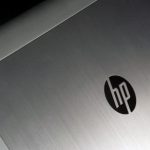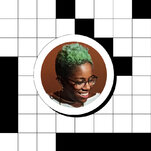How the Clash Embraced New York’s Hip Hop Scene with Their Single “The Magnificent Seven” & “The Magnificent Dance”
“Before playing guitar for Captain Beefheart and Jeff Buckley,” John Kruth writes at the Observer, “Gary Lucas worked as a copywriter for CBS/Epic Records,” where he fell in love with a punk band called the Clash, just signed to the label in 1977. “They weren’t easy to work with,” he remembered. “Like Frank Zappa, they spoke about politics, government and corporate interference with radio. They were, as I said, when I came up with the slogan to promote the album: ‘The only group that matters.’”
The slogan stuck and has become something more than marketing hype. Of the slew of British punk bands who made their way to the US in the late 1970s/early 1980s, the Clash had more impact than most others in some unexpected ways. Their classic double album London Calling made Tom Morello of Rage Against the Machine (the only 90s rap-rock band that matters) take notice and change direction. “It was music I could relate to lyrically,” he says, “much more than the dungeons-and-dragons type lyrics of my metal forebears.”
Moreover, godfathers of political rap Public Enemy found their catalyst in the Clash, and went on to create a raucous, militant sound that was the punk equivalent in hip hop, full of snarling guitars, strident declarations and sirens. The song that most had an impact on PE founder and chief lyricist Chuck D came from the band’s even more sprawling triple album Sandinista!. When Chuck heard “The Magnificent Seven,” the Clash’s attempt to incorporate Grandmaster Flash and the Sugar Hill Gang — six months before Blondie released “Rapture” — “that’s when I started to pay attention,” he says.
“Magnificent Seven” came out of the band’s increasing musical adventurousness in the recording of 1980’s Sandinista!, in which they soaked up influences from every place they toured. “When we visited places,” Mick Jones remembered, “we were affected by that… And for me, New York City was really happening at that moment.” Jones took to carrying a boom box around blasting the latest hip hop. “Joe looked at the graffiti artists,” he says, “and I was taking in things like breakdancing and rap.” The band, bassist Paul Simenon recalls, was “open for information” when they met “people like Futura and Grandmaster Flash and Kurtis Blow.”
The Clash didn’t only take from hip hop, but they tried to give back as well. Their 1981 run at “an aging Times Square Disco,” Jeff Chang writes, proved to be a major opportunity for graffiti artists like Futura, who painted a huge banner that was unfurled onstage every night and got to deliver his own rap while the band backed him. When the Clash announced an additional 11 shows after the NYPD limited capacity, they showed what Chang calls a “naive act of solidarity,” booking Grandmaster Flash and the Furious Five as an opening act. White American punks sneered at the group; the Clash “responded by excoriating their own fans in interviews, and future Bronx-bred openers, The Treacherous Three and ESG, received marginally better treatment.”
Even more exciting was the fact that the B-side to “The Magnificent Seven,” a dub remix called “The Magnificent Dance,” had made it to New York hip hop radio and made the band unlikely stars among black American listeners. “The Clash were ecstatic to tune into WBLS and find that the DJs were not only playing ‘The Magnificent Dance’ up to five times a day, but also doing their own remixes of it,” writes Marcus Gray, “dubbing on samples from the soundtrack of Dirty Harry.” While the track, with its loping bass line played by Ian Drury and the Blockheads bassist Norman Watt-Roy, primed dance floors for the success of the following year’s funk/disco “Rock the Casbah,” it was the lyrics that most grabbed listeners like Morello and Chuck D.
“They talked about important subjects,” says Chuck, “so therefore journalists printed what they said…. We took that from the Clash, because we were very similar in that regard. Public Enemy just did it 10 years later.” It may have been that long for the barriers between punk and hip hop fans to come down, but to the extent that they did, it was thanks to the musical adventurousness of the Clash and the early hip hop fans and DJs who saw their revolutionary potential.
Related Content:
“Stay Free: The Story of the Clash” Narrated by Public Enemy’s Chuck D: A New 8-Episode Podcast
The Story Behind the Iconic Bass-Smashing Photo on the Clash’s London Calling
Watch Audio Ammunition: A Documentary Series on The Clash and Their Five Classic Albums
Josh Jones is a writer and musician based in Durham, NC. Follow him at @jdmagness
How the Clash Embraced New York’s Hip Hop Scene with Their Single “The Magnificent Seven” & “The Magnificent Dance” is a post from: Open Culture. Follow us on Facebook and Twitter, or get our Daily Email. And don’t miss our big collections of Free Online Courses, Free Online Movies, Free eBooks, Free Audio Books, Free Foreign Language Lessons, and MOOCs.
, “Before playing guitar for Captain Beefheart and Jeff Buckley,” John Kruth writes at the Observer, “Gary Lucas worked as a copywriter for CBS/Epic Records,” where he fell in love with a punk band called the Clash, just signed to the label in 1977. “They weren’t easy to work with,” he remembered. “Like Frank Zappa, they
How the Clash Embraced New York’s Hip Hop Scene with Their Single “The Magnificent Seven” & “The Magnificent Dance” is a post from: Open Culture. Follow us on Facebook and Twitter, or get our Daily Email. And don’t miss our big collections of Free Online Courses, Free Online Movies, Free eBooks, Free Audio Books, Free Foreign Language Lessons, and MOOCs.













